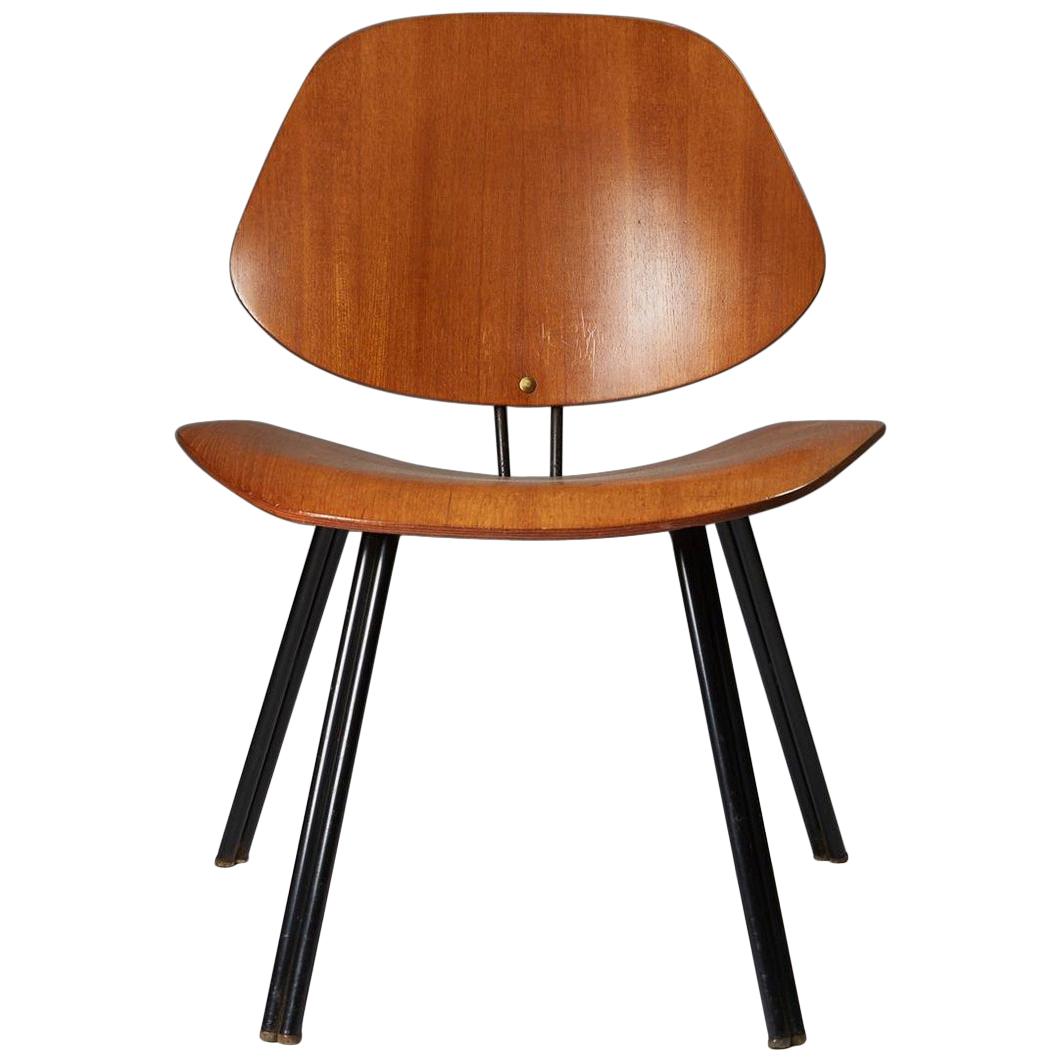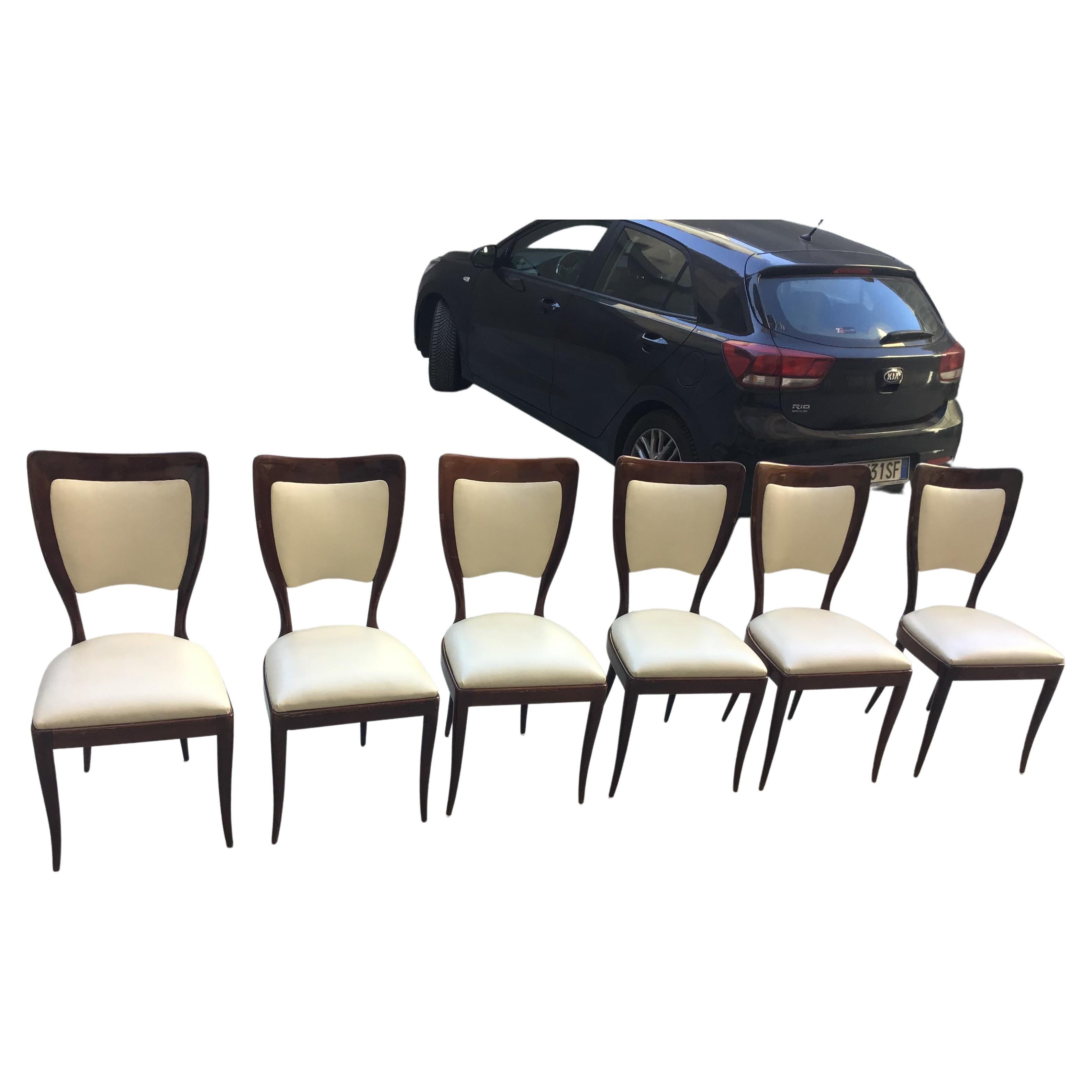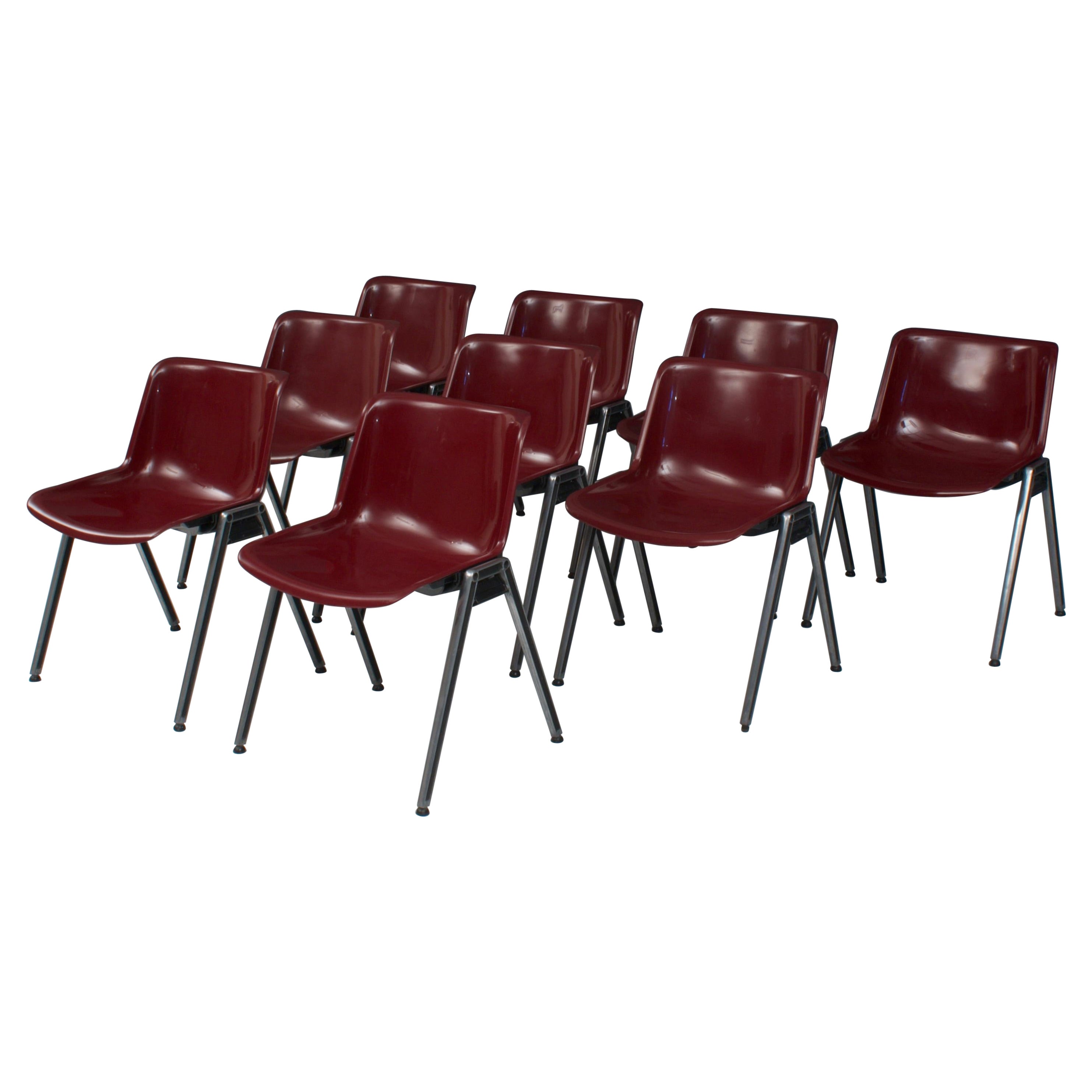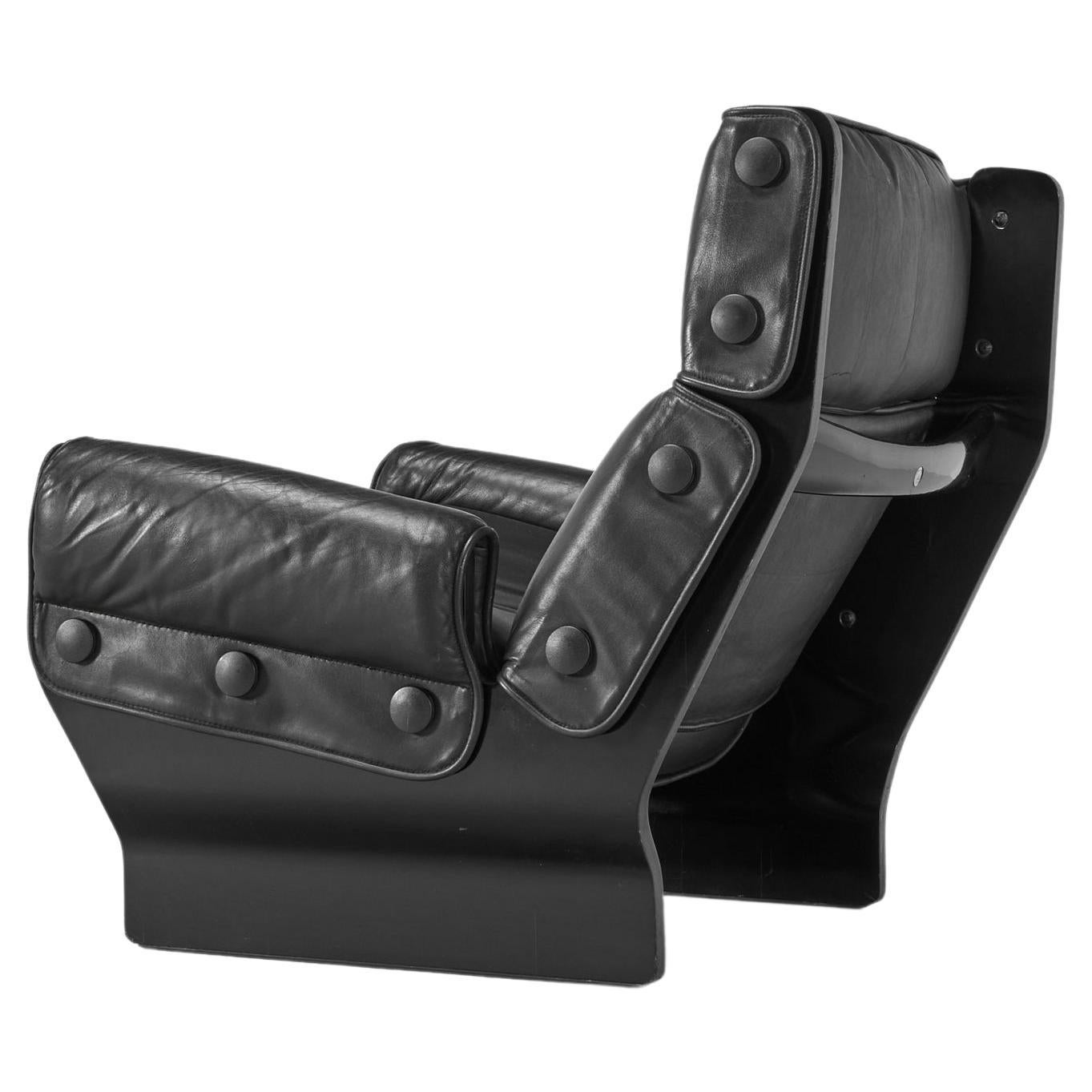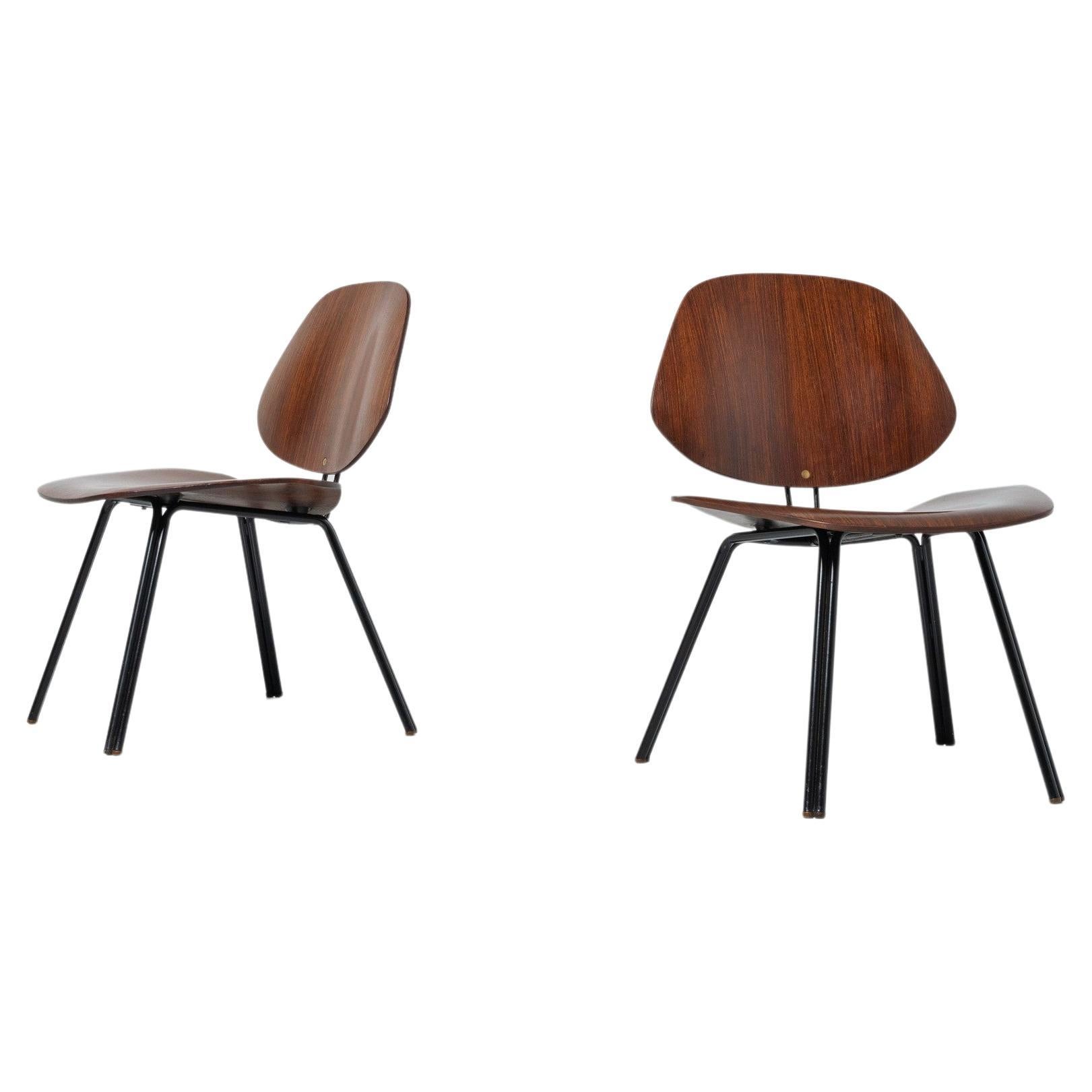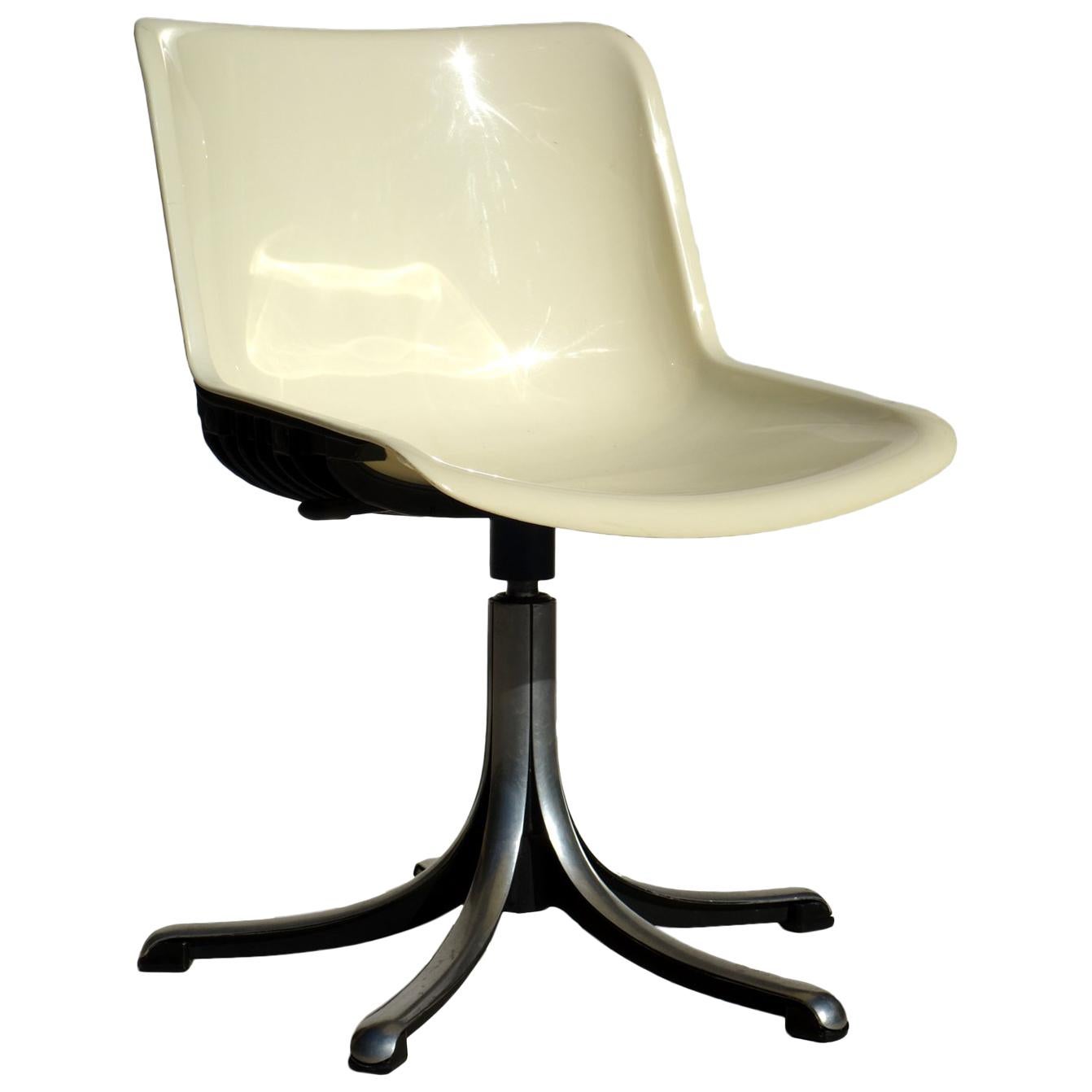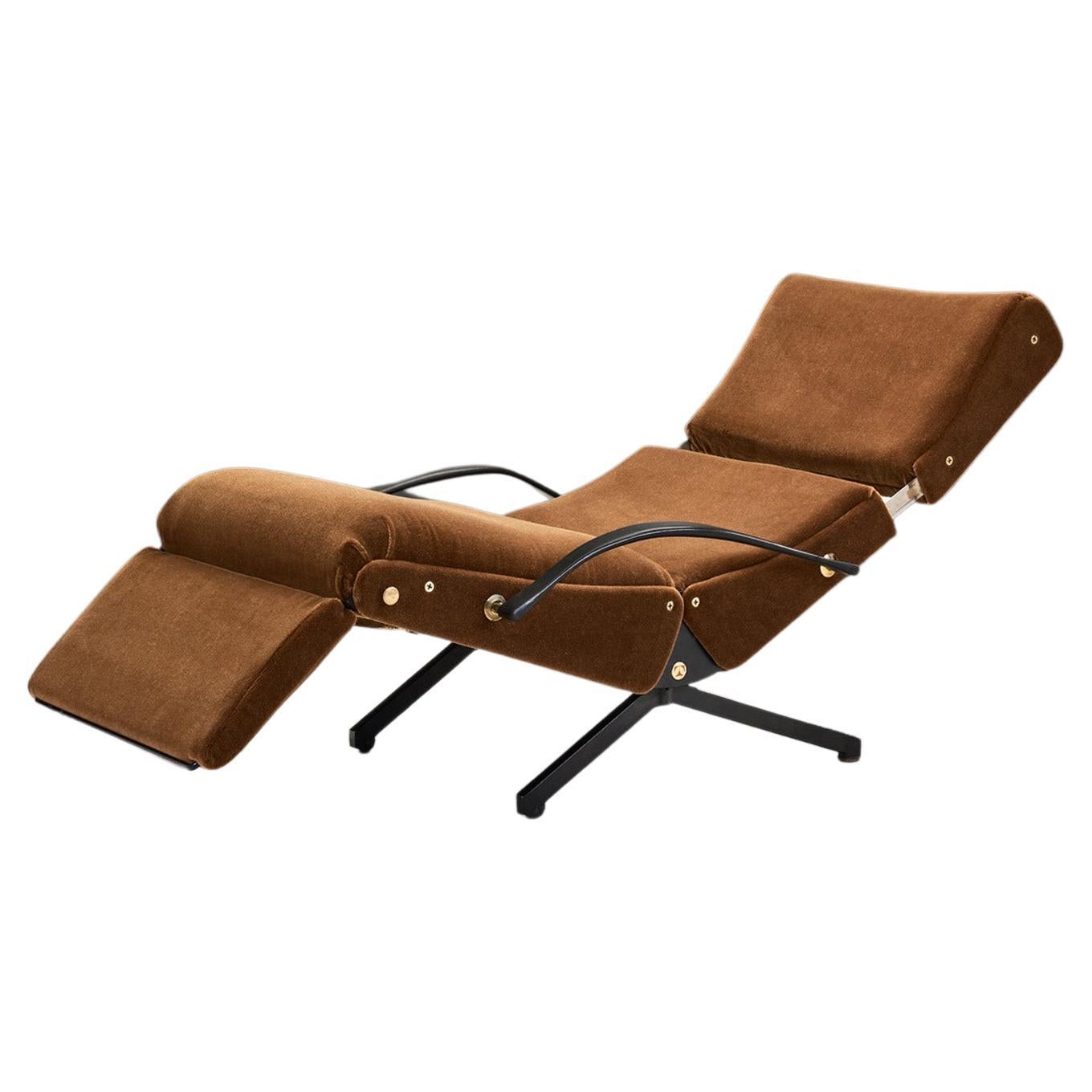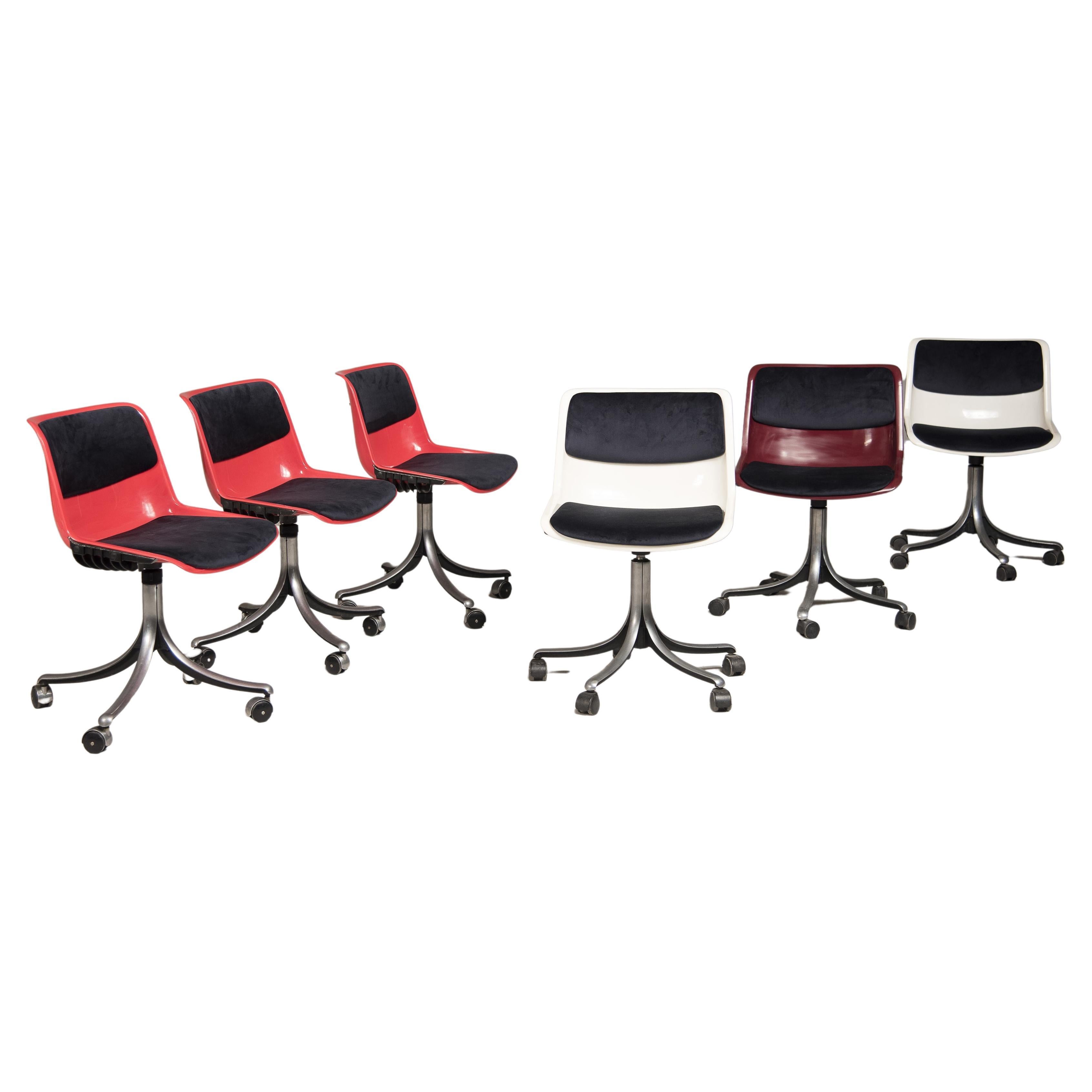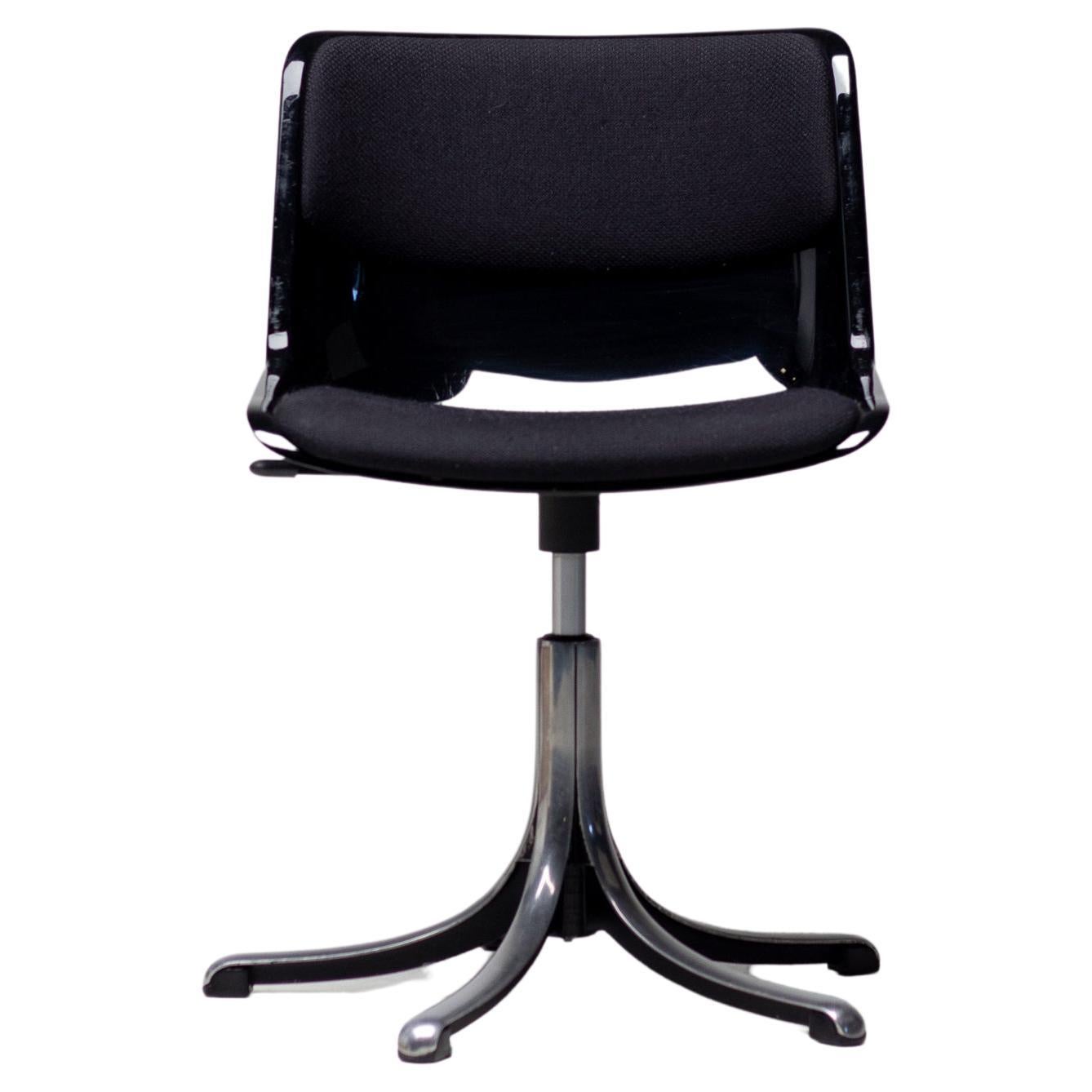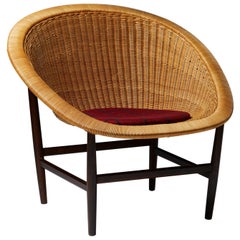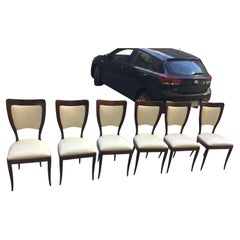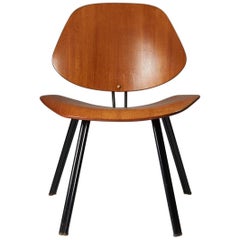
Chair, Designed by Osvaldo Borsani for Techno, Italy, 1950s
View Similar Items
Chair, Designed by Osvaldo Borsani for Techno, Italy, 1950s
About the Item
- Creator:Osvaldo Borsani (Designer)
- Dimensions:Height: 28.75 in (73 cm)Width: 22.45 in (57 cm)Depth: 23.63 in (60 cm)Seat Height: 15.36 in (39 cm)
- Style:Scandinavian Modern (Of the Period)
- Materials and Techniques:
- Place of Origin:
- Period:
- Date of Manufacture:1950s
- Condition:
- Seller Location:Stockholm, SE
- Reference Number:1stDibs: LU100669603441
Osvaldo Borsani
With his stylish and technically innovative furniture, Osvaldo Borsani helped change the face of Italian design in the 1950s and ’60s. His sofas and chairs, featuring deeply upholstered seating and adjustable position settings, have an aura of optimism and efficiency that still seems fresh and lively today.
Born in the commune of Varedo in northern Italy’s Lombardy region, Borsani studied at the Brera Academy in Milan — the same school attended by such luminaries as designer Piero Fornasetti and artist Lucio Fontana — as well as the Polytechnic University of Milan. Borsani first worked for his father’s furniture-making firm, Arredamenti Borsani, an atelier influenced by the more expressive and curvaceous wing of Art Deco design. By 1953, when, along with his twin brother, Fulgenzio — the pair also created this visionary mid-century villa — Borsani opened the furniture company Tecno, his design sensibilities had evolved toward furnishings with strong, simple forms enhanced by mechanical innovations, as with the P40 adjustable armchair (1953). Borsani would be the firm’s lead designer for 30 years, while fostering work by Vico Magistretti, Carlo di Carli, Robin Day and others.
Similar to Gio Ponti in the earliest years of his career, Borsani first created designs marked by lush and buoyant lines: tables with voluptuous curved legs, sofas with undulating backrests. But Borsani’s best-known and most novel pieces date from Tecno’s initial furniture lines: the adjustable D70 sofa, which folds open to make a daybed, and the P40 recliner. The latter — now included in the collections of the Museum of Modern Art and the Victoria & Albert Museum — is an articulated lounger with a back, seat and leg rest that can be moved into 486 different positions. Not only is it extremely comfortable, it is also enduringly chic.
Find a collection of vintage Osvaldo Borsani tables, dining chairs and other furniture on 1stDibs.
- Chair Designed by Osvaldo Borsani for Techno, Italy, 1950sBy Osvaldo BorsaniLocated in Stockholm, SEChair, designed by Osvaldo Borsani for Techno, Italy, 1950s. Plywood and lacquered steel.Category
Vintage 1950s Italian Scandinavian Modern Chairs
MaterialsSteel
- Stool Model 927 Designed by Josef Frank for Svenskt Tenn, Sweden, 1950sBy Josef FrankLocated in Stockholm, SEStool model 927 designed by Josef Frank for Svenskt Tenn, Sweden, 1950s. Mahogany and rattan. Measures: H: 43 cm W: 43 cm D: 28 cm Josef Frank was a true European, he was also a pioneer of what would become classic 20th century Swedish design and the “Scandinavian Design Style”. Austrian- born Frank started his design career as an architect after having trained at the Technische Hochschule in Vienna between 1903 and 1910. After his training he went on to teach at Kunstgewerbeschule (The Viennese School of Arts and crafts) where he developed and espoused the new school of modernist thinking towards Architecture and Design that was coming to fruition in Vienna at the time. He also went on to lead the Vienna Werkbund throughout the 1920s. This was a truly progressive group of Architects and Designers who set about improving the daily lives of Austrian people through modernist design and architecture in partnership with Arts and Crafts ideals and construction. Frank’s leadership of the Werkbund had already cemented his place at the forefront of European design. Frank’s time in Vienna was typified by his design for the “Die Wohnung” exhibition of the Deutscher Werkbund in Stuttgart, 1927 where he exhibited along side his contemporaries at the forefront of design, such as the likes of Le Corbusier and Walter Gropius. Here he showed a specially designed pair of flat-roofed reinforced concrete houses in what is now seen as a typical modernist style. What separated Frank’s house from the other 32 houses of the exhibition was the interior and furniture inside the building. It was described as “Neo-Classical” and filled with an eclectic mix of period pieces, modern design and pieces designed by Frank himself that seemed to cross the two worlds. This was a complete opposite direction to that which his fellow Architects were travelling in with their pared back and angular aesthetics. Frank said of his own work: “The house is not a work of art, simply a place where one lives,” and by this reasoning Frank rejected the regimental mechanisation of the living space that his contemporaries believed in, instead he set about creating congenial and spontaneous interiors. Frank’s practice saw him placing the bright colours and the soft forms of nature back into the furnishings and interiors that he thought modernism sorely mist. Frank, along with Oskar Walch set up Haus und Garten in Vienna in 1925. This was Frank’s first commercial foray into furniture and home furnishings and the company went on to become the most influential furnishing house in Vienna with a riotous depth of colour and interesting shapes becoming the trademark of their design. However this success was to come to an end with rise of Nazism in Vienna in the early 1930’s. Frank was Jewish, and he and his wife Anna decided they would leave Vienna for her motherland: Sweden, in 1933. Frank continued to design for Haus and Garten, visiting Vienna occasionally and designing the pieces that would continue to be the company’s best sellers long after Frank was forced to hand the company over in 1938 after the Third Reich annexation of Austria. When Josef and Anna had moved to Sweden Frank had struck up a working relationship with Design shop owner Estrid Ericson. Ericson was the proprietor of Svenskt Tenn that at this point was a successful interiors shop in Stockholm with the royal warrant of appointment to the Swedish Royal Household. In 1935 Frank had become the chief designer for Svenskt Tenn and had set about putting all of his creative effort into his designs for the company. At the World Expositions in Paris in 1937 and New York in 1939 the world saw for the first time the wealth of products that Frank had been working on, ranging from candlesticks to cabinets, there was not a domestic object that Frank had not subjected to his colourful, comfortable and organic style of Modernism. Frank’s new school of Modernism championed ideas such as chairs having a freeing, open back and that “If one desires the room to be comfortable…all pieces of furniture should allow for a free view of the separating line between the floor and the wall. A cabinet without legs breaks this line and thus reduces the feeling of space.” A world-wide audience tired of classic Modernism’s furniture with solid planes and aggressive forms leapt upon these ideas and Franks natural and bright designs for Svenskt Tenn became internationally desired. Frank created over 2000 designs for Svenskt Tenn and his products continue to be the core of their brand. Frank’s rejections of tubular metal and heavy lacquers within his furniture have insured his unique light form of Modernism continues to influence and flourish today. His natural toned mahogany and walnut pieces along with his tactile leather covered and brightly shaded lighting still bring the forms of nature back into the home. Original Frank pieces are now increasingly rare, highly desirable and are the epitome of “Scandinavian Design”. Renowned Designer and Academic Isle Crawford...Category
Vintage 1950s Swedish Mid-Century Modern Chairs
MaterialsRattan, Mahogany
- Easy Chair Designed by Nanna Ditzel for Ludvig Pontoppidan, Denmark, 1950'sBy Nanna DitzelLocated in Stockholm, SEEasy chair designed by Nanna Ditzel for Ludvig Pontoppidan, Denmark, 1950s. Exceptionally rare model with a Brazilian rosewood frame. Woven cane, Brazilian rosewood, and wool cushio...Category
Vintage 1950s Danish Mid-Century Modern Chairs
MaterialsCane, Rosewood
- Armchair Designed by Hans J. Wegner for Johannes Hansen, Denmark, 1950'sBy Hans J. WegnerLocated in Stockholm, SEOak and canvas. Measurements: H: 66 cm/ 2' 2" SH: 33.5 cm/ 1' 1 1/4" D: 68 cm/ 2' 2 3/4" W: 76 cm/ 2' 6 3/4". Hans J. Wegner is the father of Danish design and is well known for cr...Category
Vintage 1950s Danish Mid-Century Modern Chairs
MaterialsCanvas, Oak
- Pair of easy chairs, anonymous, Finland, 1950sLocated in Stockholm, SEPair of easy chairs, anonymous, Finland, 1950s. Wool upholstery and lacquered wood. H: 68 cm W: 75 cm D: 82 cm SH: 44 cmCategory
Vintage 1950s Finnish Mid-Century Modern Chairs
MaterialsWool, Wood, Lacquer
$17,157 / set - Easy chair designed by Alvar Andersson for Ferdinand Lundquist & CoBy Alvar AnderssonLocated in Stockholm, SEEasy chair designed by Alvar Andersson for Ferdinand Lundquist & Co, Sweden, 1940s. Textile and birch. Marked. H: 89 cm / 2' 11'' W: 71 cm / 2' 4'' D: 69 cm / 2' 3 1/4'' SH: 43 cm...Category
Mid-20th Century Swedish Mid-Century Modern Chairs
MaterialsTextile, Birch
- Osvaldo Borsani Chairs Wood Skin 1950 ItalyBy Osvaldo BorsaniLocated in Milano, ITOsvaldo Borsani.Category
Vintage 1950s Italian Other Chairs
MaterialsWood
- Set of 9 Stacking Chairs by Osvaldo Borsani for Tecno, Italy, 1970'sBy Osvaldo Borsani, TecnoLocated in Amsterdam, NLSet of nine wonderful stacking chairs by Osvaldo Borsani for Tecno, Italy. The chairs haven't been produced much in this color, it is a beautiful shiny Bordeaux red quite rare and di...Category
Vintage 1970s Italian Dining Room Chairs
MaterialsMetal
- Osvaldo Borsani Canada chair Tecno Italy 1965By Tecno, Osvaldo BorsaniLocated in Roosendaal, Noord BrabantIconic so called 'Canada' lounge chair model P110 designed by Osvaldo Borsani and manufactured by Tecno, Italy 1965. The Canada chair is constructed by 2 moulded plywood side panels, connected with 2 bent wooden cross bars, which holds the frame in balance and a part. The thick leather upholstered cushion structure hangs in the frame and is connected with black plastic caps. The Canada seating series was developed from some rough initial sketches by Valeria Borsani and Marco Fantoni while they were still young...Category
Vintage 1960s Italian Mid-Century Modern Lounge Chairs
MaterialsLeather, Plastic, Plywood
- Set of 3 Italian Chairs, Osvaldo Borsani Style, 1960sBy Osvaldo BorsaniLocated in Palermo, PASet of 3 Italian chairs, Osvaldo Borsani style, 1960s. Dimensions: chairs H= 90 cm; W= 50 cm; D= 65 cm; Height seat = 48 cm. Armchairs H= 90 cm; W= 60 cm; D= 67 cm; Height seat= 48...Category
Vintage 1960s Italian Mid-Century Modern Chairs
MaterialsWood
- Osvaldo Borsani P31 Chairs Tecno Italy 1957By Osvaldo BorsaniLocated in Roosendaal, Noord BrabantBeautiful P31 chairs by Osvaldo Borsani and made in Italy by Tecno in 1957. The chairs are in fully original condition and have a wonderful patina, which only adds value to them. The...Category
Vintage 1950s Italian Mid-Century Modern Chairs
MaterialsMetal
$3,540 / item - Modus Office by Osvaldo Borsani for Tecno 1960s Desk ChairBy Tecno, Osvaldo BorsaniLocated in Brescia, IT1968 by Tecno revolving chair White ivory plastic, acrylic seat and aluminum frame H max seat: 52 cm.Category
Vintage 1960s Italian Mid-Century Modern Chairs
MaterialsAluminum
Recently Viewed
View AllRead More
Mid-Century Master Osvaldo Borsani Gets His Due at Donzella
The New York City gallery has devoted its latest show to the work of the modernist Italian designer.
Peek inside Osvaldo Borsani’s Mod Italian Villa
The iconic mid-century estate outside of Milan opens its doors to the public for a very special homage.
